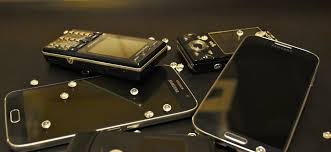Introduction
Table of Contents
Plastic injection mold machines have revolutionized the manufacturing industry, offering unparalleled efficiency, precision, and versatility. These machines play a pivotal role in the production of a wide range of plastic products, from everyday household items to complex automotive components. In this article, we’ll explore how plastic injection mold machines are transforming manufacturing processes and driving innovation across various industries.
The Evolution of Plastic Injection Mold Machines
Plastic injection molding dates back to the late 19th century, but it wasn’t until the mid-20th century that the modern injection mold machines we know today began to take shape. Over the years, advancements in technology, materials, and design have led to the development of highly sophisticated injection mold machines capable of producing intricate parts with incredible speed and accuracy.
How Plastic Injection Mold Machines Work
At its core, plastic injection molding involves injecting molten plastic material into a mold cavity, where it cools and solidifies to form the desired shape. The process begins with the feeding of raw plastic pellets into a hopper, which are then melted and injected into the mold under high pressure. Once the plastic has cooled and hardened, the mold opens, and the finished part is ejected.
Advantages of Plastic Injection Mold Machines
Plastic injection mold machines offer numerous advantages over traditional manufacturing methods, including:
High Precision and Accuracy
Injection mold machines can produce parts with tight tolerances and intricate geometries, ensuring consistency and quality across large production runs.
Fast Production Rates
With cycle times measured in seconds, injection mold machines can churn out high volumes of parts quickly and efficiently, making them ideal for mass production.
Cost-Effectiveness
Once the mold is created, the cost per part decreases significantly, making injection molding a cost-effective solution for large-scale manufacturing.
Versatility
Injection mold machines can accommodate a wide range of plastic materials, allowing manufacturers to produce parts with varying properties and characteristics.
Applications of Plastic Injection Mold Machines
Plastic injection molding is used in virtually every industry, including:
- Automotive: From interior components to exterior body panels, injection molding is integral to the production of modern vehicles.
- Consumer Goods: Everything from toys and electronics to kitchenware and packaging relies on injection mold machines for production.
- Medical: Medical devices and equipment require precision and reliability, making injection molding the preferred manufacturing method.
- Aerospace: Lightweight and durable plastic components play a crucial role in the aerospace industry, where performance and safety are paramount.
Future Trends in Plastic Injection Molding
As technology continues to advance, we can expect to see further innovations in plastic injection molding, including:
- Integration of Industry 4.0 technologies such as IoT and AI to optimize production processes and enhance efficiency.
- Development of new materials with enhanced properties, such as biodegradability and recyclability, to meet growing sustainability demands.
- Continued miniaturization and complexity of parts, driven by advancements in design software and tooling technology.
Conclusion
Plastic injection mold machines have transformed the manufacturing landscape, enabling the production of high-quality plastic parts with unprecedented speed, precision, and versatility. As industries continue to evolve and innovate, injection molding will remain a cornerstone of modern manufacturing, driving progress and shaping the future of production processes.
FAQs
- What is the lifespan of a plastic injection mold machine?
- The lifespan of a plastic injection mold machine can vary depending on factors such as usage, maintenance, and technological advancements. However, with proper care and maintenance, many machines can last for decades.
- Are plastic injection mold machines environmentally friendly?
- While plastic injection molding itself is not inherently environmentally friendly, efforts are being made to reduce its environmental impact through initiatives such as recycling and the use of biodegradable materials.
- Can plastic injection mold machines produce parts with different colors and finishes?
- Yes, plastic injection mold machines can produce parts with a variety of colors and finishes by incorporating pigments and additives into the plastic material during the molding process.
- What safety measures are in place to prevent accidents during plastic injection molding?
-
- How can manufacturers optimize production with plasticinjectionmoldmachines?
-







